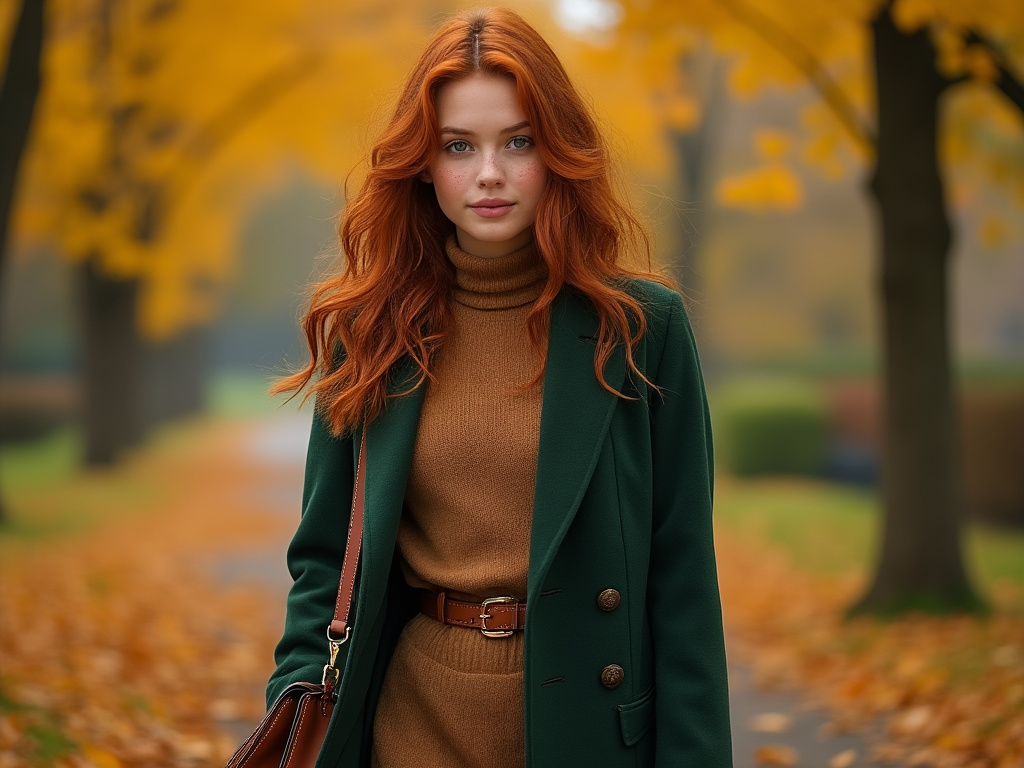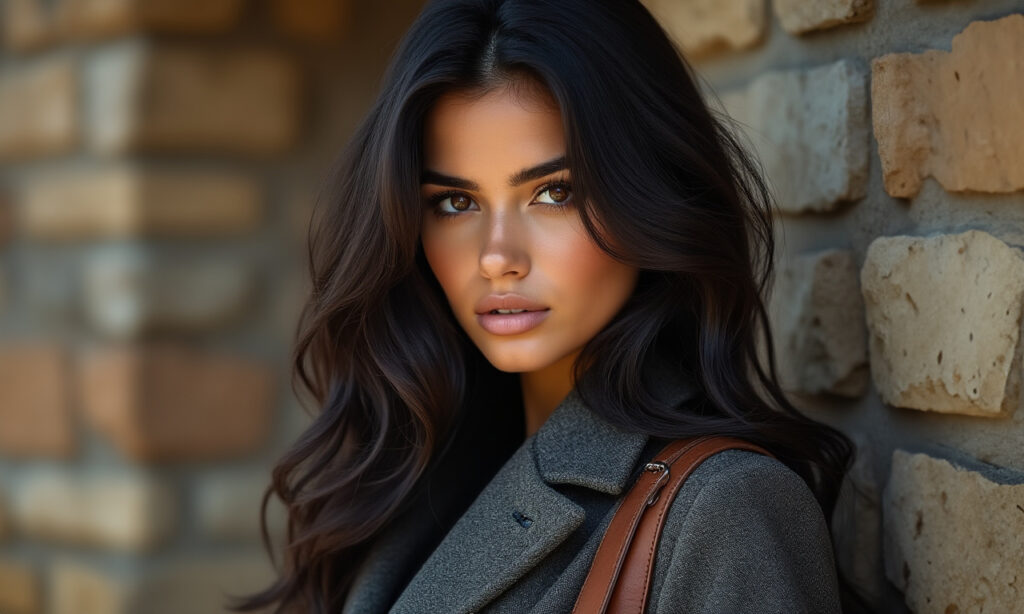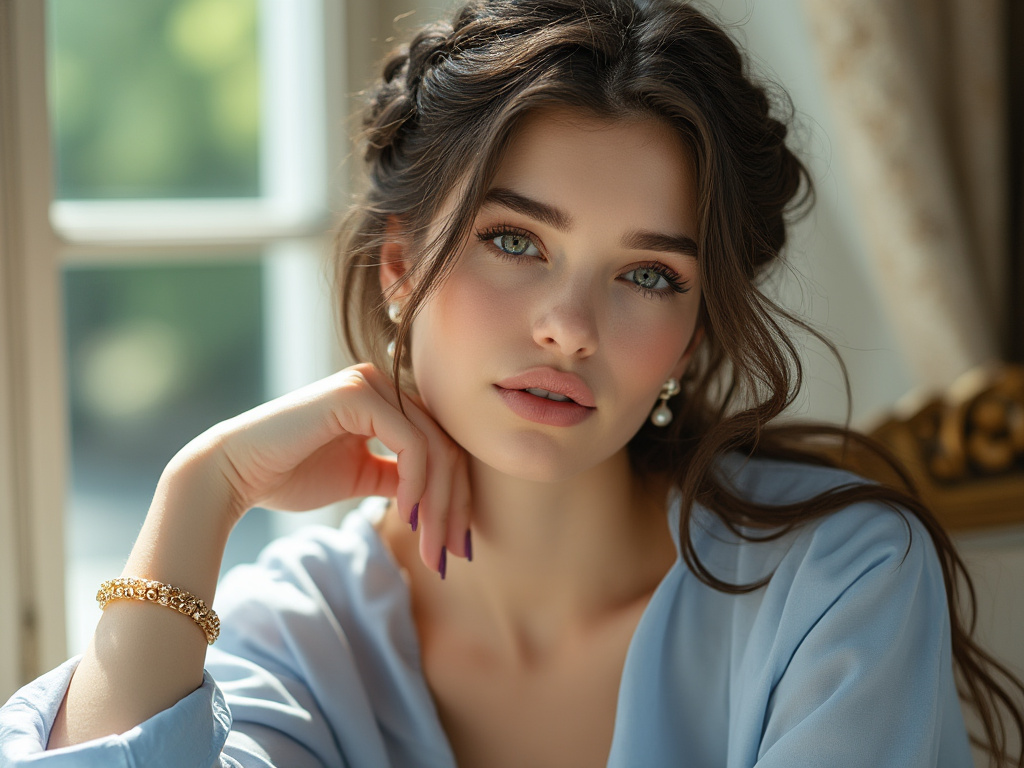In a world often consumed by fast fashion and fleeting trends, there’s a quiet rebellion against the loud and the flashy. It’s called Old Money Fashion, a style steeped in history, subtlety, and grace. Rooted in an ethos of understated luxury, old money fashion relies on soft, refined colors and impeccable craftsmanship to tell a story—one of elegance, tradition, and quiet confidence.
This isn’t just about clothes; it’s about a mindset. It’s the art of looking effortlessly polished without trying to attract attention. The secret? A color palette that whispers sophistication rather than shouts for it. Whether it’s the warm neutrality of beige, the commanding authority of navy, or the heritage charm of hunter green, every shade plays a role in creating an enduring aesthetic.
Let’s delve into the world of old money fashion and uncover how its strategic use of subtle colors elevates wardrobes, making them timeless and endlessly stylish.

The Allure of Old Money Fashion: Why Subtle Colors Matter
Old money fashion isn’t just about appearance—it’s about values. At its heart, this style is a statement against excess and trendiness. It’s about celebrating craftsmanship over clutter, heritage over hype, and restraint over ostentation. The careful use of muted, timeless colors is a defining feature of this approach, reflecting the following principles:
- Understated Sophistication: Subtle colors create a refined and composed look, exuding elegance without trying too hard.
- Timeless Appeal: While trends come and go, a curated palette of classic shades ensures your wardrobe remains relevant for decades.
- Versatility: Muted tones allow for endless combinations, ensuring every piece in your wardrobe can be styled effortlessly.
From country estates to city soirées, the colors of old money fashion are as adaptable as they are iconic.
1. Neutral Tones: The Cornerstone of Quiet Luxury
The Role of Neutrals
Neutral shades like beige, ivory, cream, and taupe form the backbone of the old money wardrobe. These colors offer an unparalleled ability to balance an outfit, providing a clean canvas for layering textures and introducing accents.
- Why They Work: Neutrals convey calm, composure, and an air of quiet confidence. Their understated nature lets quality fabrics and impeccable tailoring shine.
- Psychological Impact: These colors evoke trust and dependability—perfect for a style that values tradition and subtlety.
How to Use Neutrals
Neutrals are highly versatile and can form the foundation for outfits across all seasons.
- Outerwear: A beige trench coat is a timeless classic that transitions seamlessly from day to night.
- Tailored Pieces: Think ivory blouses and taupe slacks, perfect for professional or casual settings.
- Texture Play: Combine a cashmere cream sweater with a silk taupe scarf for a layered, luxurious effect.
By grounding your wardrobe in neutrals, you create a canvas that’s effortlessly elegant and endlessly versatile.

2. The Quiet Power of Navy Blue
Why Navy Is a Staple
If black is the queen of timeless fashion, then navy blue is the understated monarch standing quietly beside her. Navy exudes authority without feeling overpowering, offering an alternative to black that’s softer yet equally commanding.
- Symbolism: Navy represents professionalism, trust, and depth. It’s a shade that signals confidence without being flashy.
- Old Money Roots: From nautical traditions to its presence in tailored suits, navy is deeply tied to heritage and sophistication.
Incorporating Navy
Navy is endlessly versatile, working across casual, formal, and business settings.
- Outerwear: A structured navy blazer with gold accents evokes a nautical yet refined charm.
- Everyday Wear: Pair navy chinos with a crisp white shirt for a preppy, polished look.
- Formal Occasions: A navy evening gown, paired with understated pearl jewelry, is a showstopper for black-tie events.
Navy’s richness allows it to stand alone or complement other muted tones, making it an indispensable part of any old money wardrobe.
3. Hunter Green: Heritage and Elegance
The Appeal of Hunter Green
Hunter green is a color steeped in tradition. This deep, earthy shade is synonymous with countryside estates, equestrian pursuits, and the timeless appeal of British tailoring.
- Why It Resonates: Hunter green conveys a sense of stability, connection to nature, and an appreciation for heritage.
- Old Money Associations: It’s often seen in classic pieces like wool coats, riding jackets, and tartan scarves—items that have endured for generations.
How to Wear Hunter Green
This shade adds depth and richness to your wardrobe, particularly during fall and winter.
- Outerwear: A wool coat in hunter green pairs beautifully with camel or cream accessories.
- Accents: Introduce hunter green through leather gloves, boots, or handbags for a subtle nod to tradition.
- Layering: Combine a hunter green sweater with beige trousers for a look that’s elegant yet approachable.
Hunter green is a reminder that boldness can coexist with subtlety, offering a depth of color that never overwhelms.

4. Muted Pastels: Graceful and Understated
A Softer Touch
While pastels often evoke images of springtime exuberance, muted pastels like dusty rose, powder blue, and pale lavender bring a different energy—one of softness and grace.
- Why They Work: Muted pastels are feminine without being overly delicate, adding a hint of color without breaking the subdued tone of the old money palette.
- Symbolism: These shades represent approachability, elegance, and calm—a perfect match for the restrained old money aesthetic.
Styling Muted Pastels
These colors shine brightest in tailored, high-quality fabrics that showcase their softness.
- Blouses and Dresses: A powder blue silk blouse paired with ivory trousers exudes effortless sophistication.
- Spring Layers: Combine a pale lavender cardigan with beige slacks for a refreshing, refined look.
- Accessories: A dusty rose handbag or pair of heels adds a touch of color to neutral-heavy outfits.
Muted pastels provide a refreshing contrast to darker, richer tones, making them a valuable addition to any season’s wardrobe.
5. Earthy Tones: Grounding and Rich
The Depth of Earthy Colors
Earthy tones like chocolate brown, warm gray, and olive green anchor the old money wardrobe, bringing warmth and texture to muted palettes.
- Old Money Roots: These shades are inspired by the natural world, reflecting a lifestyle connected to tradition and grounded in reality.
- Why They Work: Earthy tones add richness and depth to an outfit, providing balance without overpowering.
Incorporating Earthy Tones
Earthy tones are perfect for creating contrast or adding texture to an outfit.
- Outerwear: A chocolate brown leather jacket or trench coat makes a bold yet refined statement.
- Layering: Pair warm gray slacks with a cream blouse for a harmonious, monochromatic look.
- Accessories: Olive green handbags or scarves offer a subtle but effective pop of color.
Earthy tones remind us that sophistication often lies in the details, grounding the old money aesthetic in nature-inspired hues.
Old Money Fashion: Elevating Subtle Colors Through Texture, Accessories, and Tailoring
(Part Two of the Series)
In Part One, we explored the foundational colors of old money fashion—classic neutrals, navy blue, hunter green, muted pastels, and earthy tones. These shades form the backbone of a timeless wardrobe, but the magic of old money fashion lies in more than just color. The true artistry comes alive when these shades are elevated through texture, tailoring, and accessories.
In this second installment, we’ll delve into how craftsmanship, material choices, and thoughtful accessorizing take old money fashion from merely stylish to enduringly iconic. By the end, you’ll have all the tools needed to curate a wardrobe that not only reflects elegance but also feels like an extension of your personality.

The Power of Texture: Adding Depth to Subtle Colors
Old money fashion isn’t just about what you see—it’s about what you feel. Luxurious textures breathe life into muted tones, creating an aesthetic that’s rich and multi-dimensional. When colors are understated, textures become the star of the show.
Key Textures in Old Money Fashion
- Cashmere: Soft, luxurious, and timeless, cashmere sweaters, scarves, and coats are staples of old money wardrobes. Their natural sheen adds a layer of sophistication to any neutral or pastel.
- Wool: Whether in coats, trousers, or tweeds, wool provides warmth and structure, making it perfect for colder months. A hunter green or chocolate brown wool coat exudes heritage charm.
- Silk: The smooth, lustrous quality of silk adds an air of refinement, particularly when paired with muted pastels like powder blue or dusty rose.
- Linen: A summer favorite, linen blends effortlessly with ivory and beige for a breezy yet polished look.
- Leather: From buttery handbags to supple gloves, leather accents in earthy tones like taupe or olive green lend a sense of timeless luxury.
Layering Textures for Impact
Combining different textures within the same color palette creates depth and interest without sacrificing subtlety. For example:
- Pair a cashmere sweater in beige with a silk scarf in muted lavender.
- Layer a wool coat over a linen blouse for a sophisticated mix of structure and softness.
By playing with textures, you can add richness and dimension to even the simplest outfits.
Tailoring: Where Fit Meets Elegance
Color and texture are crucial, but without proper tailoring, even the most beautiful pieces can fall flat. In old money fashion, fit is king. Garments are impeccably tailored to complement the wearer’s silhouette, creating a polished and composed appearance.
Why Tailoring Matters
- Timelessness: A well-tailored piece will remain a wardrobe staple for years, regardless of changing trends.
- Flattery: Proper tailoring ensures your clothes fit perfectly, enhancing your natural shape rather than masking it.
- Versatility: Tailored pieces can transition seamlessly from casual to formal settings, depending on how they’re styled.
Signature Tailored Pieces
- Blazers: A tailored navy blazer with clean lines is a versatile staple that pairs with everything from trousers to skirts. Look for details like structured shoulders and fitted waists.
- Trousers: High-waisted trousers in warm gray or taupe elongate the silhouette and pair beautifully with silk blouses.
- Coats: From trench coats to pea coats, tailored outerwear in classic neutrals like camel or hunter green is essential for achieving a refined look.
- Dresses: A-line or sheath dresses in muted pastels exude quiet sophistication when tailored to fit impeccably.
Investing in tailoring elevates your wardrobe from good to extraordinary, making every piece feel like it was made just for you.

Accessories: Subtle Statements of Elegance
In the world of old money fashion, accessories are never loud or ostentatious. Instead, they serve as quiet enhancements, complementing the outfit without overshadowing it. The right accessory can elevate an ensemble, adding a touch of individuality while staying true to the understated aesthetic.
The Essentials of Old Money Accessories
- Jewelry: Think delicate, timeless pieces like pearl earrings, gold bracelets, or diamond studs. Avoid anything too large or flashy—subtlety is key.
- Scarves: A silk scarf in muted pastels or classic neutrals adds a layer of elegance to even the simplest outfit. Knot it loosely around your neck or drape it over your shoulders for effortless sophistication.
- Shoes: Classic leather loafers, ballet flats, or understated pumps in earthy tones are both practical and stylish. Look for quality craftsmanship and clean lines.
- Handbags: Structured handbags in taupe, navy, or hunter green exude timeless charm. Avoid logos or obvious branding in favor of minimalist designs.
- Watches: A classic leather-strap watch with a simple face is the epitome of old money elegance.
How to Use Accessories Strategically
Accessories in old money fashion should blend seamlessly with the outfit, enhancing the overall look rather than competing for attention. For instance:
- Pair a camel coat with a hunter green leather handbag for a balanced, elegant contrast.
- Add a pearl necklace to a navy dress for a timelessly chic ensemble.
By choosing accessories that prioritize craftsmanship and subtlety, you can create looks that feel complete and polished.
Building an Old Money Wardrobe: Step-by-Step Guide
Ready to embrace the old money aesthetic? Here’s a step-by-step guide to curating a wardrobe that embodies quiet luxury:
Step 1: Audit Your Existing Wardrobe
- Identify pieces that align with the old money aesthetic (e.g., neutral tones, classic silhouettes, quality fabrics).
- Set aside items that feel too trendy or flashy.
Step 2: Invest in Key Staples
- Start with neutral basics like a beige blazer, an ivory blouse, and taupe trousers.
- Add depth with pieces in navy, hunter green, and muted pastels.
- Prioritize quality over quantity—one well-made coat is worth more than five trendy jackets.
Step 3: Focus on Fit
- Have your key pieces tailored for a perfect fit. This small investment can make a significant difference.
Step 4: Add Thoughtful Accessories
- Choose timeless pieces that complement your wardrobe, such as a structured leather handbag or a silk scarf.
Step 5: Maintain and Care for Your Wardrobe
- Old money fashion values longevity. Keep your clothes in pristine condition by following proper care instructions and storing them thoughtfully.

The Old Money Color Palette: A Handy Table
Here’s a quick reference table to help you navigate the most iconic colors in the old money aesthetic, along with how and where to incorporate them into your wardrobe.
| Color | Symbolism | Best For | How to Style It |
|---|---|---|---|
| Beige | Neutrality, calm, sophistication | Outerwear, trousers, sweaters | Pair a tailored beige blazer with a white blouse and taupe loafers for a polished everyday look. |
| Ivory | Purity, elegance, versatility | Blouses, dresses, scarves | Wear an ivory silk blouse with navy trousers for a smart casual outfit. |
| Navy Blue | Authority, reliability, tradition | Blazers, dresses, formal suits | Match a navy blazer with cream trousers and gold accessories for timeless elegance. |
| Hunter Green | Heritage, tradition, connection | Coats, accessories, sweaters | Layer a hunter green cashmere sweater over beige slacks for a rich, autumnal ensemble. |
| Dusty Rose | Grace, softness, subtle femininity | Dresses, silk scarves, handbags | Pair a dusty rose handbag with a warm gray trench coat for a chic touch of color. |
| Chocolate Brown | Grounding, richness, warmth | Leather goods, outerwear, boots | Style a chocolate brown trench coat with muted pastel accents for a balanced, layered look. |
| Warm Gray | Stability, modern elegance | Trousers, blazers, cardigans | Wear warm gray tailored trousers with a cream blouse and subtle jewelry for effortless sophistication. |
Old Money Fashion: Frequently Asked Questions
1. What makes a wardrobe “old money”?
An old money wardrobe emphasizes quality over quantity, timeless pieces, and a muted color palette. It avoids flashy logos or trends in favor of understated elegance, often incorporating textures like cashmere, wool, silk, and leather.
2. How can I start incorporating old money fashion into my current style?
Start by focusing on neutral basics like beige blazers, ivory blouses, and tailored trousers. Gradually add depth with darker hues like navy and hunter green. Prioritize high-quality fabrics and well-tailored pieces.
3. Can old money fashion work for casual settings?
Absolutely! Old money fashion isn’t just for formal events. A beige cashmere sweater with taupe trousers or a navy sweater paired with jeans can create a casual yet refined look.

4. Are accessories important in old money fashion?
Yes, but they should be subtle and functional. Think pearl earrings, leather handbags, silk scarves, and classic watches. Avoid overly trendy or branded accessories.
5. Is old money fashion expensive?
It doesn’t have to be. While old money fashion values high-quality pieces, you can achieve the look by focusing on timeless, versatile items and having them tailored to fit. Shopping second-hand or investing in fewer, higher-quality pieces can also make this style more accessible.
6. What role does color play in old money fashion?
Color is central to the old money aesthetic. Muted, timeless shades like neutrals, navy, hunter green, and dusty rose create a sophisticated and versatile palette. These colors convey elegance and restraint, allowing the craftsmanship and fit of garments to take center stage.
7. How can I ensure my wardrobe stays timeless?
Stick to classic cuts and colors, invest in quality materials, and avoid overly trendy pieces. Regular maintenance—like dry cleaning, proper storage, and repairs—ensures your clothes remain in great condition for years to come.
8. Can bold colors be part of old money fashion?
Bold colors are rarely used but can appear as subtle accents. For example, a deep burgundy scarf or a sapphire-blue brooch can add a touch of personality without overwhelming the overall aesthetic.

Conclusion: Elevating Everyday Elegance
Old money fashion is more than just an aesthetic—it’s a philosophy of thoughtful curation and quiet confidence. By combining a muted color palette with luxurious textures, impeccable tailoring, and carefully chosen accessories, you can create a wardrobe that feels both timeless and personal.
Remember, style isn’t about being seen—it’s about being remembered. Through the art of subtle color use and refined craftsmanship, you can achieve a look that’s effortlessly elegant, endlessly versatile, and uniquely yours. So start building your old money wardrobe today, and let your clothes tell a story of quiet sophistication and enduring charm.

Anna West, the visionary behind Clothes Color Guide, is our go-to for all things fashion. Merging the finest of runway trends with everyday style, she demystifies the world of color and pattern. While clothing is her mainstay, Anna also shares insights on interior design, pet care, and relationship advice. Dive into her articles and emerge with a vibrant perspective on style and life.
Reviewed By: Joanna Perez and Marcella Raskin
Edited By: Lenny Terra
Fact Checked By: Sam Goldman
Photos Taken or Curated By: Matthew Mansour
